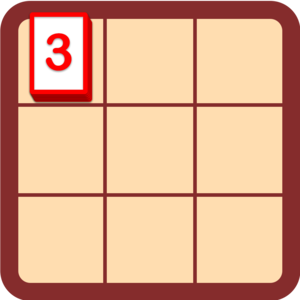CF1740D.Knowledge Cards
普及/提高-
通过率:0%
AC君温馨提醒
该题目为【codeforces】题库的题目,您提交的代码将被提交至codeforces进行远程评测,并由ACGO抓取测评结果后进行展示。由于远程测评的测评机由其他平台提供,我们无法保证该服务的稳定性,若提交后无反应,请等待一段时间后再进行重试。
题目描述
Pak Chanek, a renowned scholar, invented a card puzzle using his knowledge. In the puzzle, you are given a board with n rows and m columns. Let (r,c) represent the cell in the r -th row and the c -th column.
Initially, there are k cards stacked in cell (1,1) . Each card has an integer from 1 to k written on it. More specifically, the i -th card from the top of the stack in cell (1,1) has the number ai written on it. It is known that no two cards have the same number written on them. In other words, the numbers written on the cards are a permutation of integers from 1 to k . All other cells are empty.
You need to move the k cards to cell (n,m) to create another stack of cards. Let bi be the number written on the i -th card from the top of the stack in cell (n,m) . You should create the stack in cell (n,m) in such a way so that bi=i for all 1≤i≤k .
In one move, you can remove the top card from a cell and place it onto an adjacent cell (a cell that shares a common side). If the target cell already contains one or more cards, you place your card on the top of the stack. You must do each operation while satisfying the following restrictions:
- Each cell other than (1,1) and (n,m) must not have more than one card on it.
- You cannot move a card onto cell (1,1) .
- You cannot move a card from cell (n,m) .
Given the values of n , m , k and the array a , determine if the puzzle is solvable.
输入格式
Each test contains multiple test cases. The first line contains an integer t ( 1≤t≤2⋅104 ) — the number of test cases. The following lines contain the description of each test case.
The first line of each test case contains three integers n , m , and k ( 3≤n,m≤106 , nm≤106 , 1≤k≤105 ) — the size of the board and the number of cards.
The second line of the test case contains k integers a1,a2,…,ak — the array a , representing the numbers written on the cards. The values of a are a permutation of integers from 1 to k .
It is guaranteed that the sum of nm and k over all test cases do not exceed 106 and 105 respectively.
输出格式
For each test case, output "YA" (without quotes) if it is possible and "TIDAK" (without quotes) otherwise, which mean yes and no in Indonesian respectively.
You can output "YA" and "TIDAK" in any case (for example, strings "tiDAk", "tidak", and "Tidak" will be recognised as a negative response).
输入输出样例
输入#1
4 3 3 6 3 6 4 1 2 5 3 3 10 1 2 3 4 5 6 7 8 9 10 5 4 4 2 1 3 4 3 4 10 10 4 9 3 5 6 8 2 7 1
输出#1
YA TIDAK YA YA
说明/提示
In the first test case, the following is one way the puzzle can be done:
- Move the card with 3 written on it from cell (1,1) to cell (1,2) , then cell (1,3) .
- Move the card with 6 written on it from cell (1,1) to cell (2,1) , then cell (3,1) , then cell (3,2) , then cell (3,3) .
- Move the card with 4 written on it from cell (1,1) to cell (1,2) .
- Move the card with 1 written on it from cell (1,1) to cell (2,1) , then cell (2,2) , then cell (2,3) .
- Move the card with 2 written on it from cell (1,1) to cell (2,1) , then cell (2,2) .
- Move the card with 5 written on it from cell (1,1) to cell (2,1) , then cell (3,1) , then cell (3,2) , then cell (3,3) .
- Move the card with 2 written on it from cell (2,2) to cell (2,1) .
- Move the card with 4 written on it from cell (1,2) to cell (2,2) , then cell (3,2) , then cell (3,3) .
- Move the card with 3 written on it from cell (1,3) to cell (1,2) , then cell (2,2) , then cell (3,2) , then cell (3,3) .
- Move the card with 2 written on it from cell (2,1) to cell (3,1) , then cell (3,2) , then cell (3,3) .
- Move the card with 1 written on it from cell (2,3) to cell (3,3) .
An animated illustration regarding the process mentioned above is as follows:
